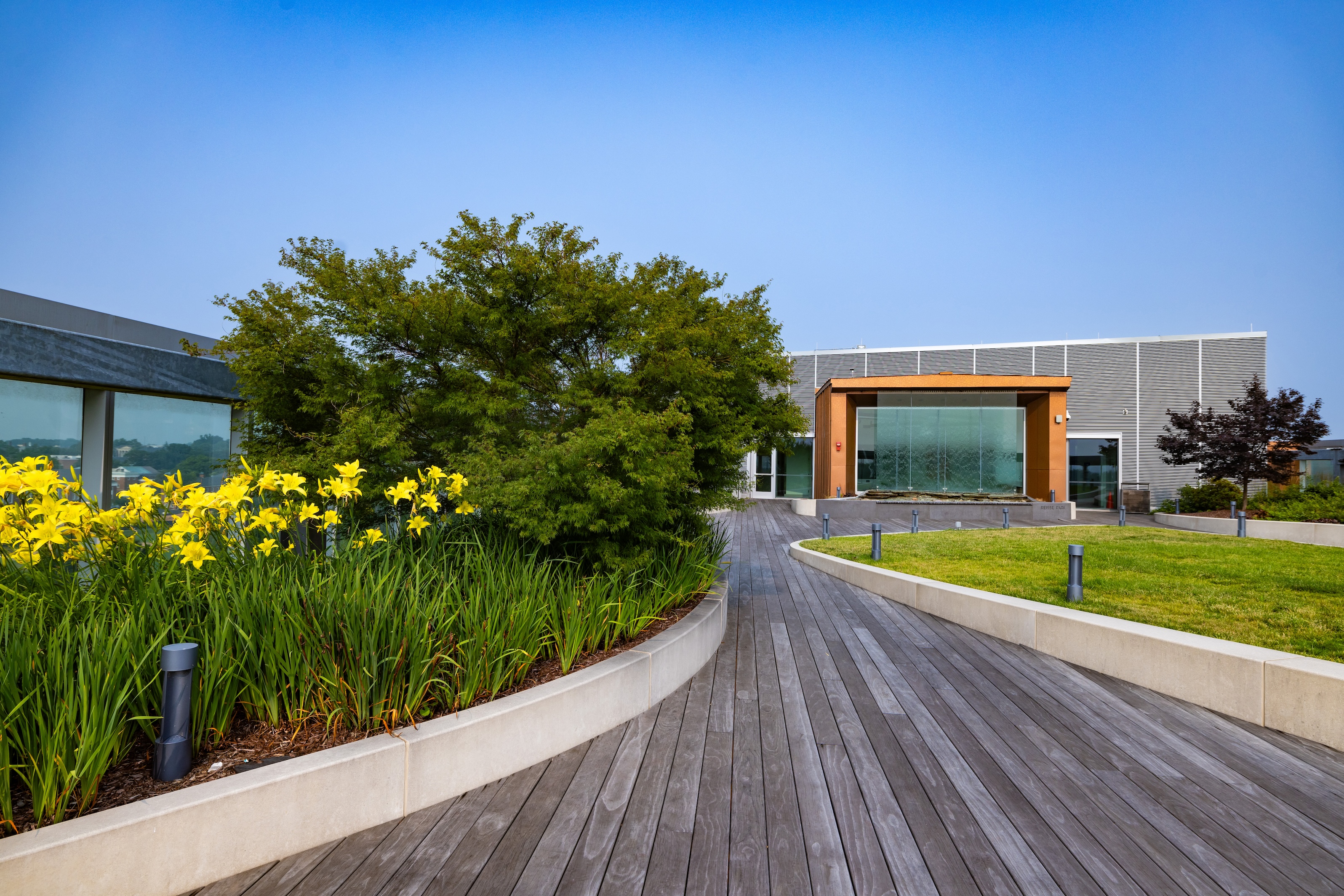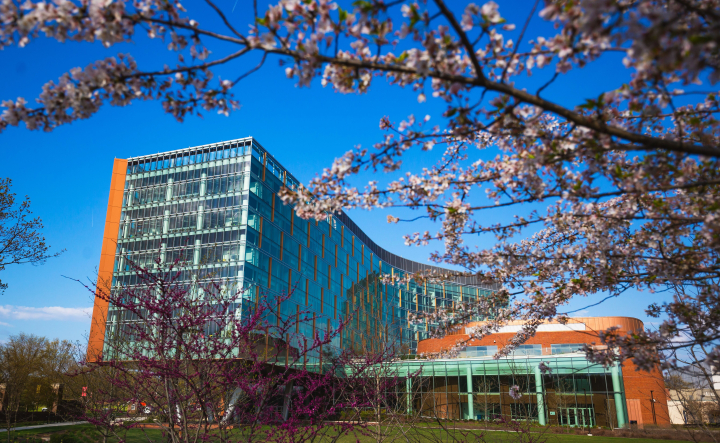Marking Five Years of Research, Scholarship and Innovation in the Iribe Center
A well-designed building is more than just a structure—it’s also a catalyst for collaboration, fostering a dynamic environment where people come together to brainstorm ideas and create new technologies.
The Brendan Iribe Center for Computer Science and Engineering is exactly such a place. Launched five years ago this month, the 215,000 square foot structure is home to the Department of Computer Science and the University of Maryland Institute for Advanced Computer Studies (UMIACS).
A visit to the ground floor of Iribe offers multiple experiences. Computer science is the largest major on campus—and one of the largest in the nation—with visitors keenly aware of this fact as they observe hundreds of undergraduates heading to class or studying in the expansive lobby area.
Cutting-edge research is also visible on the ground level, with a shiny silver mannequin staring at you from the Small Artifacts Lab (it’s used to test wearable technologies), miniature drones buzzing in the Brin Family Aerial Robotics Lab, and digital art or other 3D visuals captivating your attention as you walk by the Immersive Media Design lab space.
For UMIACS, the Iribe Center is a boon for the seamless flow of bold ideas and new knowledge across multiple academic disciplines.
The institute currently supports more than 80 faculty and 200 Ph.D. students from 15 departments on the UMD campus. Most of these faculty and students reside in the Iribe Center, spread out in offices, labs and workspaces on the third and fourth floor of the building as well as part of the fifth floor that’s home to the Maryland Cybersecurity Center.
“Most scientific advances that have transformed our world have emerged at the boundary between disciplines,” says Mihai Pop, a professor of computer science who is the director of UMIACS. “Our continued scientific leadership critically depends on scientists from multiple disciplines coming together to work on impactful projects.”
For Naomi Feldman, a professor of linguistics, the Iribe Center has offered abundant opportunities to interact with faculty she might not normally see in her home department.
“I’m a computational linguist and having colleagues literally right down the hallway working on computational acoustics, computer vision and machine learning has been very advantageous for me and for my students,” Feldman says.
The building has tremendous aesthetic value as well, faculty members say.
Vanessa Frias-Martinez, an associate professor in the College of Information Studies, says the airiness of the Iribe Center and the stunning views it offers make for a calm and creative workspace. 
“My office has large windows and plenty of natural light, and we have our beautiful rooftop garden—both serve as a source of inspiration and comfort,” says Frias-Martinez, who is director of the Computational Linguistics and Information Processing (CLIP) Lab. “I feel like I can really focus on my work and be productive, but it’s also nice to pause and unwind with the fantastic views and green spaces we have available.”
Feldman, also a member of the CLIP Lab, says that the Iribe Center has multiple spaces for students to meet and network and for faculty to host workshops and seminars.
“Our students come from diverse academic backgrounds—linguistics, computer science, information studies, human-computer interaction, and more—and the workshops and talks in the Iribe Center offer a robust opportunity to communicate across disciplines,” Feldman says.
Michael Cummings, a professor of biology who leads the Center for Bioinformatics and Computational Biology, says that in addition to his graduate students having a modern, inviting workspace, moving to the Iribe Center has made many of his day-to-day administrative tasks easier and more productive.
“I’m able to walk down the hall and talk with the business office on the status of a research grant or meet with our tech staff to go over our computing needs,” Cummings says. “This is not only more efficient, but also more pleasant.”
With research and innovation in UMIACS constantly expanding, the Iribe Center will continue to serve its mission, and serve it well, says UMIACS director Pop.
“We’re thankful for the private donations and state support that made this building possible,” Pop says. “But it remains up to the people that work here—faculty, students and staff—to fulfill the vision of why this space was built: we’re a hub for technology, collaboration and discovery that will have an impact on the world.”
—Reporting on this story by Melissa Brachfeld, UMIACS communications group
The Department welcomes comments, suggestions and corrections. Send email to editor [-at-] cs [dot] umd [dot] edu.
